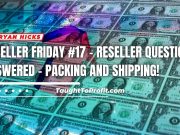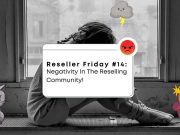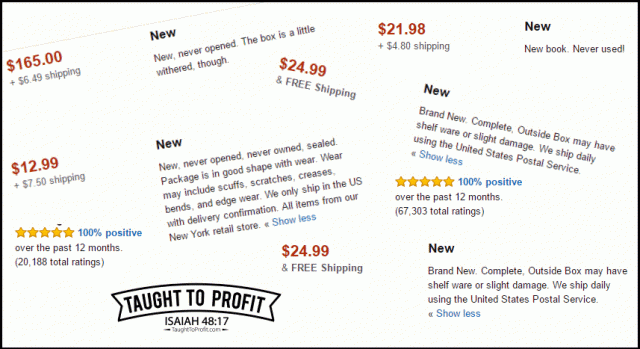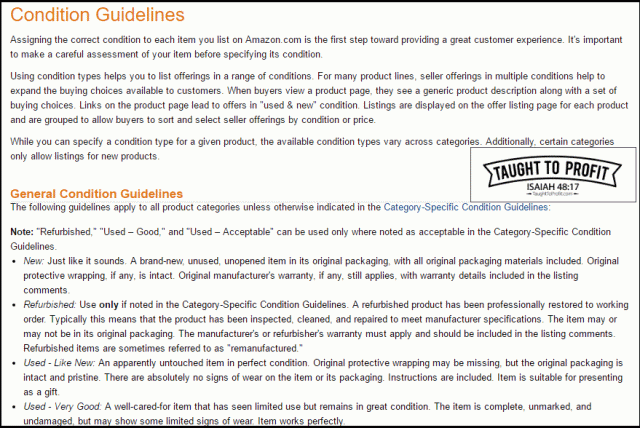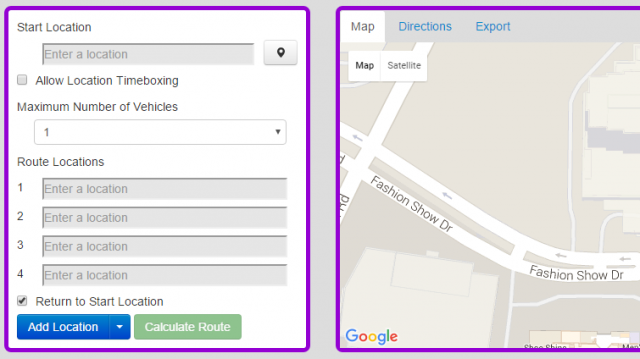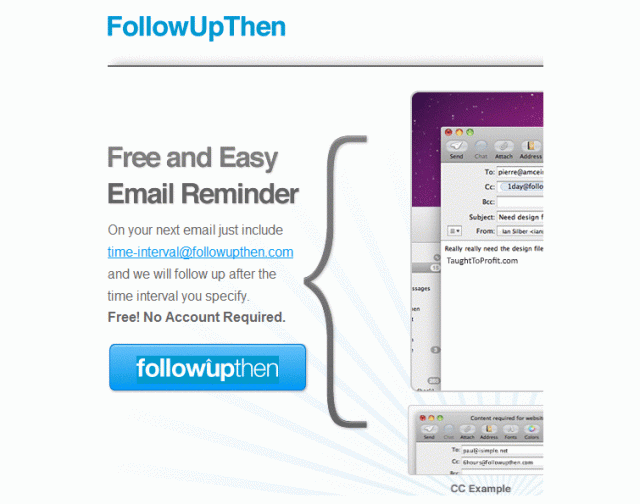Amazon Item Descriptions Revealing The Item Is Not The Condition Listed
Often when shopping on Amazon or listing items you can see all manner of strange descriptions sellers put for their items. The worst description I have ever seen was an item listed as “New” where the seller said it had only been used a few times and was in perfect condition. Of course, this is not even remotely close to a new item, but many sellers either do not know the Amazon condition guidelines or do not care to follow them. I guess many sellers do not care to properly rate an item’s condition because Amazon does not seem to actively monitor these descriptions or hold sellers accountable for incorrect condition ratings.
I have collected just a small sample of descriptions where the sellers plainly describe that their items are not the condition they listed them as. Lest you think these are all newbie sellers, here are some examples of the rankings of these sellers:


Even sellers with a large amount of feedback and with 100% positive ranking are still not listing items with the most accurate condition.

This item is described as “New, never opened, never owned [are they saying that they do not own the item?], sealed.” The problem is that the description also goes on to say that it is in good shape with wear, and that the wear may include scuffs, scratches, creases, bends, and edge wear. All of these things would immediately disqualify the item as being in “New” condition, and it could not even be listed as “Used – Like New” according to Amazon’s Condition Guidelines. A New item must be perfect with no wear to the box. Even a “Like New” condition item means “the original packaging is intact and pristine” and that it has “absolutely no signs of wear on the item or its packaging.”

This description of a supposedly “New” condition item describes why the item could never be listed as “New” or even “Like New.” Now, I do want to add that many of these types of descriptions are default condition descriptions and the actual item they are shipping to the customer may be perfect and actually in “New” condition. This is why it is probably better to not use such default descriptions.

This exact same description is used by multiple sellers, as is seen in the same one in the above two images which are from two different sellers. It may be a description given by some Amazon selling course or some site people are following word-for-word. It could also be that the two sellers using this exact description are the same seller with two accounts, in which case they are breaking Amazon’s terms against multiple accounts and opening themselves up to permanent account suspension.

This description tells us that this item would be “Used – Very Good” due to the fact that it does not qualify per Amazon’s Condition Guidelines. You cannot sell an item as “New” when it has a withered box. It does not matter if you personally would rate it as “New,” the guidelines for what is new are determined by Amazon and not the whims of the seller.

This description is fine, except it is a description for an action figure, not a book. There is no book or anything book-related included with the item. This is most likely some default description the seller uses and accidentally kept when they switched to listing non-book items, but this could cost them sales if people see this and skip it because they are not looking for a book.
You may wonder if these condition issues really are all that important, especially when there are so many sellers listing items with a better condition than they are truly able to be rated. Just because Amazon does not currently police this, they could in the future and your business could be in jeopardy if you have built it upon incorrect condition ratings. Another problem, one that applies right now, is that of buyer complaints that could result from improperly rating an item’s condition. While this may not result in a complaint from most customers, if a customer purchased the item with Amazon’s 1-Click buying, they might never see the description and the buyer is depending on the condition to be accurately rated. This could easily result in a return, negative feedback, or even an A-to-Z claim when the customer gets the damaged box item that they were expecting to be a new item with an undamaged box. It is always best to rate an item the proper condition and ensure that your customer has the best experience possible. Tricking customers by listing items as “New” because you want to get the highest price for an item with a damaged box is short-term thinking and will eventually end in problems.


